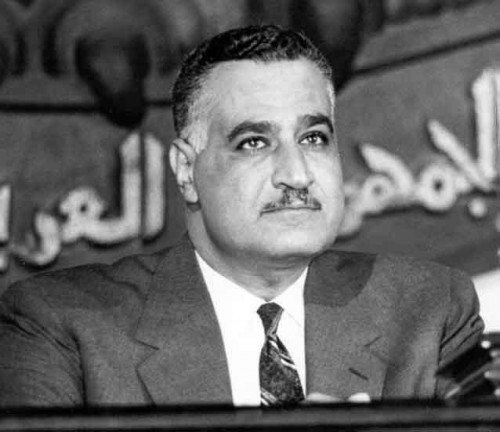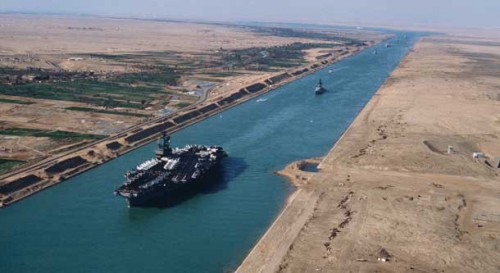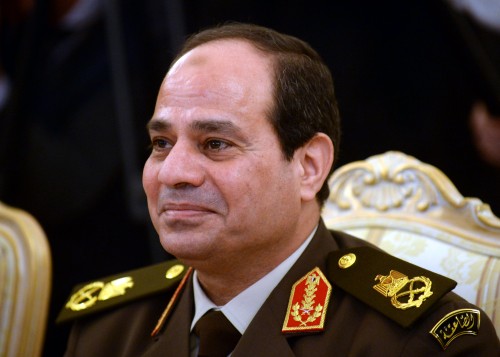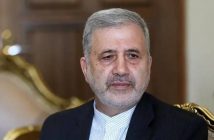Egypt’s third renaissance
The importance of Sharm el Sheikh Economic conference (13-15 March) is the fact that it will launch the third wave of renaissance in Egypt. It is not just a conference. We can say that the physical icon of this third renaissance is the digging of the new Suez Canal branch. The Islamists and the Muslim Brotherhood are doing everything for the failure of this conference. Bombs, attacks, terrorism everyday and everywhere. They are saying to the investors: are you crazy, will you invest your dollars in this burning country? Let it burn to ashes and let’s celebrate our victory.
Sisi said that some parties try to put obstacles to this conference which is considered at this moment “the arm of Egypt”. I am telling them: Nobody will be able to put obstacles to our progress because we want to build our country for our kids and our grand-sons.
Sharm el Sheikh Conference is an important milestone in the war between the modern civilization and the bestial creatures of ISIS and their allies. La conferenza di Sharm el Sheikh è un’importante pietra miliare nella guerra tra la moderna civilizzazione e le creature bestiali dell’Isis e i loro alleati.
See you in Sharm!
Flight tickets to Sharm El-Sheikh reduced by 25% for economic conference
Abdel Nasser Second Renaissance
Gamal Abdel Nasser (1918 –1970) was the second President of Egypt, serving from 1956 until his death. He planned the 1952 overthrow of the monarchy, and was deputy prime minister in the new government. In 1953, Nasser introduced far-reaching land reforms. Following a 1954 Muslim Brotherhood-led attempt on his life, he ordered a crackdown on the organization, put President Muhammad Naguib under house arrest, and assumed executive office.
No doubt that Nasser launched a second wave of renaissance in Egypt. The High Dam had been the icon of this period. Producing electricity and developing agriculture. Nasser is still considered until today as the man who wanted to help the poor people in Egypt. During my last visit to Upper Egypt I found a woman who is still keeping the photo of Nasser in her house. Nasser is also the one who stood strongly against the Islamists and the Muslim Brotherhood. He was for a secular state and not a religious state. No doubt that Nasser committed mistakes but finally the renaissance project had been aborted by the war of 1967 in which the United States, Israel, Saudi Arabia and the Muslim Brotherhood wanted his departure and the defeat of the secular Renaissance project. We know that after the war of 1967, many Islamists had been delighted for Egypt’s defeat.
Muhammad Ali First Renaissance
Muhammad Ali Pasha (1769 –1849) was an Ottoman Albanian commander in the Ottoman army, who became Wāli, and self-declared Khedive of Egypt and Sudan with the Ottoman’s temporary approval. Though not a modern nationalist, he is regarded as the founder of modern Egypt because of the dramatic reforms in the military, economic and cultural spheres that he instituted. He also ruled Levantine territories outside Egypt. The dynasty that he established would rule Egypt and Sudan until the Egyptian Revolution of 1952 led by Muhammad Naguib.
Egypt and Turkey towards modernisation Egitto e Turchia verso la modernizzazione
Sultan Selim III had recognized the need to reform and modernize the Ottoman Empire along European lines to ensure that his state could compete. Selim III, however, faced stiff local opposition from an entrenched clergy and military apparatus. Consequently, Selim III was deposed and ultimately killed for his efforts. Muhammad Ali, too, recognized the need to modernize, and unlike Selim, he had dispatched his chief rival, giving him a free hand to copy Selim’s attempted reforms. Muhammad Ali’s goal was to establish a powerful, European-style state. To do that, he had to reorganize Egyptian society, streamline the economy, train a professional bureaucracy, and build a modern military.
Industry
The industrial innovations were not limited to weapons production. Muhammad Ali established a textile industry in an effort to compete with European industries and produce greater revenues for Egypt. While the textile industry was not successful, the entire endeavor employed tens of thousands of Egyptians.[26] Additionally, by hiring European managers, he was able to introduce industrial training to the Egyptian population.
Culture
In the 1820s, Muhammad Ali sent the first educational “mission” of Egyptian students to Europe. This contact resulted in literature that is considered the dawn of the Arabic literary renaissance, known as the Nahda.
Suez Canal
Suez Canal, opened in November 1869, had been the physical and geographical icon of this first renaissance, connecting Europe with the entire world.
British occupation
As a consequence of Suez Canal importance, British forces occupied Egypt from 1882 until 1956, when the last British forces withdrew in accordance with the Anglo-Egyptian agreement of 1954. In 1956 Nasser announced the nationalization of the Suez Canal and Britain went to war again against Egypt in late 1956, but with insufficient international support was forced to back down.
La conferenza di Sharm El Sheikh e il terzo Rinascimento egiziano
L’importanza della conferenza economica di Sharm el Sheikh (13-15 marzo) è il fatto che lancerà la terza ondata di rinascita in Egitto. Non è solo una conferenza. Possiamo dire che l’icona fisica di questa terza rinascita è lo scavo della nuova filiale del Canale Suez. Gli islamisti e i fratelli musulmani stanno facendo qualsiasi cosa per il fallimento della conferenza. Ci sono bombe, attacchi, terrorismo ogni giorno e in qualsiasi luogo. Loro stanno dicendo agli investitori: “Siete pazzi, investirete i vostri dollari in questo Paese che brucia? Lasciatelo bruciare in cenere e celebrate la nostra vittoria”.
Sisi ha detto che alcune parti cercano di mettere ostacoli alla conferenza che è considerata in questo momento “L’arma dell’Egitto”. “Io li sto ascoltando: nesssuno sarà in grado di mettere ostacoli al nostro progresso perché noi vogliamo costruire il nostro Paese per i nostri figli e nipoti”. La conferenza di Sharm el Sheikh è un’importante pietra miliare nella guerra tra la moderna civilizzazione e le creature bestiali dell’Isis e i loro alleati.
Ci vediamo lì a Sharm!
Biglietti aerei per Sharm El-Sheikh ridotti del 25% per la conferenza economica
Abdel Nasser Secondo Rinascimento
Gamal Abdel Nasser (1918 –1970) era il secondo presidente dell’Egitto, dal 1956 fino alla sua morte. Progettò nel 1952 il rovesciamento della monarchia, ed è stato vice primo ministro nel nuovo governo. Nel 1953, introdusse profonde riforme della terra. Dopo che nel 1954 i Fretelli Musulmani attentarono alla sua vita egli ordinò una repressione sull’organizzazione, mise il presidente Muhammad Naguib agli arresti domiciliari e assunse un ufficio esecutivo.
Non c’è dubbio che Nasser abbia lanciato una seconda ondata di rinascita in Egitto. L’alta diga è stata l’icona di questo periodo. Producendo elettricità e sviluppando l’agricoltura. Nasser è considerato ancora oggi come l’uomo che ha voluto aiutare le povere persone dell’Egitto. Durante la mia ultima visita in Egitto ho trovato una donna che sta ancora tenendo una foto di Nasser nella sua casa. Nasser è anche l’unico ad essere contro i Fratelli Musulmani. Era per uno stato laico e non per uno religioso.
Non c’è dubbio che Nasser abbia commesso errori ma alla fine il progetto di rinascita è stato interrotto dalla guerra del 1967 nel quale Stati Uniti, Israele, Arabia Saudita e i Fratelli Musulmani hanno voluto il suo allontanamento e la sconfitta del progetto risorgimentale secolare. Noi sappiamo che dopo la guerra del 1967 molti islamisti erano felici per la sconfitti dell’Egitto.
Muhammad Ali Primo Rinascimento
Muhammad Ali Pasha (1769 -1849) è stato un comandante ottomano albanese dell’esercito ottomano, che divenne Wali, e autodichiarato Khedive di Egitto e Sudan, con l’approvazione temporanea dell’ottomano. Anche se non è un nazionalista moderno, egli è considerato il fondatore della moderna Egitto a causa delle riforme drammatiche in campo militare, economico e culturale che ha istituito. Ha inoltre stabilito terre levantine fuori dell’Egitto. La dinastia che ha fondato avrebbe governato l’Egitto e il Sudan fino alla Rivoluzione egiziana del 1952 guidata da Muhammad Naguib.
Egitto e Turchia verso la modernizzazione
Il sultano Selim III aveva riconosciuto la necessità di riformare e modernizzare l’Impero Ottomano lungo linee europee per assicurare che il suo stato potesse competere. Selim III, invece, ha affrontato una rigida opposizione locale da parte di un clero radicato e dall’apparato militare. Di conseguenza, Selim III fu deposto e infine ucciso per i suoi sforzi. Anche Muhammad Ali ha riconosciuto la necessità della modernizzazione e a differenza di Selim, aveva eliminato il suo principale rivale, dandogli una mano libera per copiare i tentativi di riforme di Selim. L’obiettivo di Muhammad Ali è stato quello di creare un potente stato di stile europeo. Per farlo egli ha riorganizzato la società egiziana, razionalizzato l’economia, formato una burocrazia professionale, e costruito una moderna forza militare.
Industria
Le innovazioni industriali non si sono limitate alla produzione di armi. Muhammad Ali ha stabilito una industria tessile, nel tentativo di competere con le industrie europee e produrre maggiori ricavi per l’Egitto. Mentre l’industria tessile non aveva successo, l’intero sforzo aveva impiegato decine di migliaia di egiziani. Inoltre, con l’assunzione di manager europei, è stato in grado di introdurre una formazione industriale per la popolazione egiziana.
Cultura
Nel 1820, Muhammad Ali inviò la prima “missione” educativa di studenti egiziani verso l’Europa. Questo contatto risulta in letteratura che è considerato l’alba della rinascita letteraria araba, noto come il Nahda.
Canale di Suez
Il Canale di Suez, è stato aperto nel 1869, ed è stata l’icona fisica e geografica del primo rinascimento che collega l’Europa con il mondo intero.
Occupazione Britannica
Come conseguenza dell’importanza del Canale di Suez, le forze inglesi occuparono l’Egitto dall’1882 fino 1956, quando le ultime forze britanniche si ritirarono in conformità con l’accordo anglo-egiziano del 1954. Nel 1956 Nasser ha annunciato la nazionalizzazione del Canale di Suez e l’Inghilterra andò in guerra contro l’Egitto verso la fine del 1956, ma con il sostegno internazionale insufficiente è stato costretto a fare marcia indietro.
Paul Attallah






